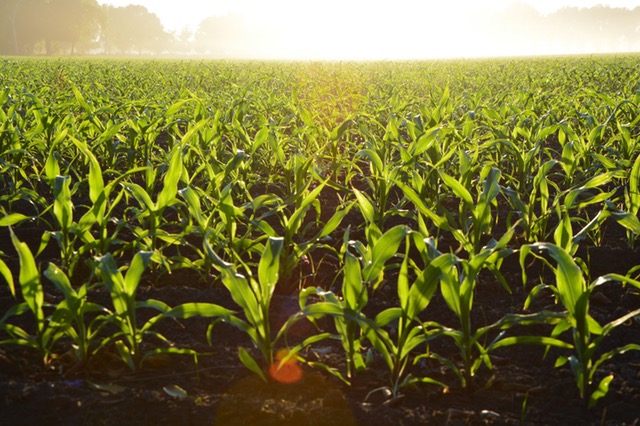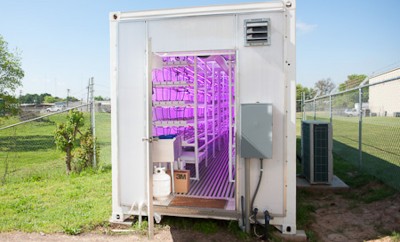Environment
Why Are Some Farmers Spraying Glyphosate on Crops Right Before Harvest?

What is “desiccation” and why are a growing number of farmers doing it? Most often implemented during particularly wet seasons in the northern midwest states of the U.S. or Canadian provinces like Manitoba and Saskatchewan, a pre-harvest agricultural practice called ‘desiccation‘ is being utilized by some farmers. The process involves spraying glyphosate or other herbicides on crops such as wheat to kill them around one to two weeks prior to their anticipated harvest date, allowing them to dry early, and subsequently start harvesting ahead of schedule. According to Dr. Charles Benbrook, the practice is actually not new and started in Scotland during the 1980s.
Benbrook elaborates on the growing practice in a recently published paper, pointing out that, “Farmers…had trouble getting wheat and barley to dry evenly so they can start harvesting. So they came up with the idea to kill the crop (with glyphosate) one to two weeks before harvest to accelerate the drying down of the grain.” The problem is that glyphosate, which is the main ingredient in Monsanto’s Roundup, is considered by some to be a probable carcinogen, and may be becoming increasingly present in our food supply.
Used predominantly on crops like oats, wheat, and edible beans, glyphosate has been researched for concerns associated with birth defects, embryonic DNA damage, endocrine disruption, and more, in addition to its links to cancer. Interestingly, Benbrook’s paper indicates rapid growth of the already expansive use of the herbicide, as “74% of all glyphosate sprayed on crops since the mid-1970’s was applied just in the last ten years, as cultivation of genetically-modified corn and soybeans have expanded throughout the U.S. and globally.”
Desiccation is not necessarily all bad, however. It is advantageous for use in northern, colder regions, where crops may take prolonged periods to dry for harvesting. Joel Ransom of North Dakota State University explains that it’s quite useful for farmers in regions where conditions are wet and cold, adding that, “It does help hasten dry down and controls grain weeds and other material that slows down the threshing practice. It has an important role in areas where it’s wet.” Ransom pointed out that in North Dakota, the greatest wheat-producing state in the United States, desiccation is not at all uncommon. And in similar regions like Manitoba, agricultural consultant and farmer Gerald Wiebe indicates,“I would estimate that 90 to 95 percent of wheat acres in Manitoba are sprayed pre-harvest with glyphosate; the exception would be in dry areas of the province where moisture levels at harvest time are not an issue,” he says.
So what can be done?
Albert Lea Seeds co-owner Tom Ehrhardt of Minnesota describes any attempt by grain millers to avoid sourcing grains desiccated with glyphosate as “a challenge.” Desiccation is also used on other crops besides wheat, including lentils, corn, rye, flax, millet, buckwheat, peas, sugar beets, potatoes, canola and triticale. Although some may try to purchase grain not treated with the herbicide, Ehrhardt claims a “don’t ask, don’t tell” policy is currently in place among the farmers, indicating a lack of transparency about who uses it and who does not. Concerns raised by millers, however, have less to do with health and more to do with grain quality, says Terry Tyson, Canadian procurement manager for Grain Millers. Tyson references issues with lower quality flour and flakes resulting from the desiccated product, which start with the disruption of natural maturation due to herbicides.
While some may still argue for the safety of glyphosate, they’d likely admit they’d prefer not to eat week’s worth of sandwiches made from glyphosate residue-laden bread. Gerald Wiebe expresses continued worries that, “Consumers don’t realize when they buy wheat products like flour, cookies and bread they are getting glyphosate residues in those products. It’s barbaric to put glyphosate in food a few days before you harvest it.” Additionally, he insists on the possible links to celiac disease, stating, “We’ve seen an explosion of gluten intolerance,” he said. “What’s really going on?”
Although glyphosate residues have been found in wheat flour, Ransom points out that the traces detected by the U.S. Wheat Quality Council were “well below the maximum residue limits in the United States.” And while the U.S. Food and Drug Administration has promised to begin testing foods for glyphosate, no reports have been indicated yet. On top of that, the USDA dropped plans to test the herbicide earlier this year. It appears that consumers, as is often the case, will need to wait just a bit longer for answers.





0 comments